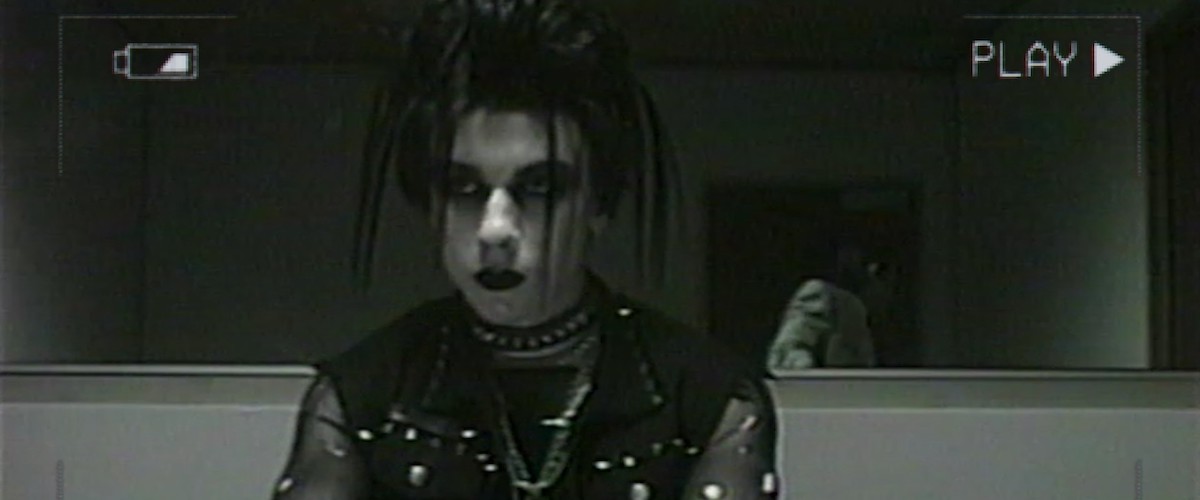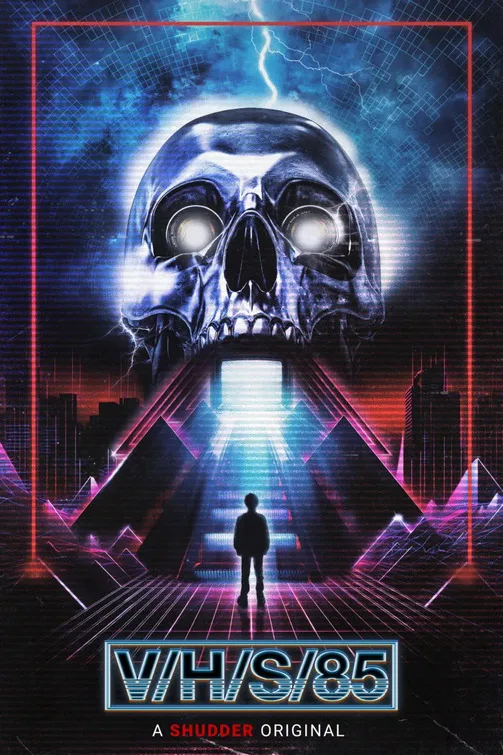Whatever promise the “V/H/S” horror anthology franchise started with is barely present in “V/H/S/85,” a low-energy potboiler that promises to transport genre fans back to the analog past for some reason. Yes, the 1980s were ostensibly a simpler time when TV anchors and guest celebrities asked home viewers if they knew where their children were, and Betamax tapes were something people talked about.
If “V/H/S/85” is about anything, it’s the prevalence of VCR tape players and VHS camcorders, which provides a sturdy enough conceptual clothesline for talented and/or known horror filmmakers directors like Scott Derrickson (“The Black Phone”) and Gigi Saul Guerrero (“Satanic Hispanics,” “Bingo Hell”).
Unfortunately, most of the featured segments don’t have much to say about the mediated nature of reality except: boy, remember when you could watch anything on a VHS tape? Most “V/H/S/85” segments promise viewers a glimpse at dark and, therefore, instantly suppressed memories. In reality, the collected shorts confuse home video’s subversive potential with its ability to defy viewers’ expectations. Who knows what you’ll see next? Pretty much just a bunch of stuff you’ve seen before, only now with some mildly ironic twists and tweaks to adjust for retrospective tracking.
“V/H/S/85” begins with a wraparound segment called “Total Copy,” stringing along viewers with a sometimes creepy news report about a government coverup and a violent shape-shifting alien. “Total Copy” is a sadly representative “V/H/S/85” entry in that it barely makes sense and is only sort of interesting for some awkward little hiccups of humor. These characters sometimes seem to know how weird their stories are, they just can’t really show or explain why in a short amount of time.
Not enough time is spent lingering on the creepy dead air and empty spaces that might have been, in a feature movie, stretched out for maximum rope-a-dope effect. Here, diced up between the other segments, “Total Copy” seems pointlessly drawn out. This might come as an unwelcome surprise for horror fans who know that this part of “V/H/S/85” is written and directed by David Bruckner (“Hellraiser,” “The Signal”), who rose to name-brand recognition after standout segments in earlier horror anthologies like “Southbound” and the first “V/H/S.”
Next, there’s Mike Nelson’s “No Wake,” an impressively grisly but underwhelming slasher pastiche about a pack of horny young people who schlep out to an abandoned summer camp, only to be massacred for our generic pleasure. These meat puppets drop carbon-dated references—“What the f*** is ‘Pet Sematary’?”—and wear kitschy clothes, like a one-piece swimsuit with an American flag pattern. “No Wake” features an amusing twist concerning the mysterious lake that our horny protagonists dip into, but that narrative hitch only reminds viewers that the filmmakers know what we’re expecting. At least this portion of “V/H/S/85” is memorably gross.
Then there’s Gigi Saul Guerrero’s “God of Death,” which is presented as a chaotic TV news broadcast interrupted by an earthquake and further upended by a supernatural event involving nudity and ritualistic human sacrifice. This one’s got it all but doesn’t go anywhere that Gary Sherman already did with greater focus and effect in the 1990 made-for-TV found-footage earthquake rescue pic “After the Shock.” Even on its own overstuffed terms, “God of Death” still comes up short, given how tonally disjointed and narratively cluttered it often is, especially during weird moments of levity. Because even a little fart caught on a hot mic is apparently interesting if it reflects how wild and spontaneous raw VHS footage could be.
The best segments in “V/H/S/85” are also its shortest: Natasha Kermani’s “TKNOGD” follows a performance art séance that turns into an unplanned bloodbath, while “Ambrosia” (also directed by Nelson) follows a family reunion that turns into a bloody shootout after a police raid prompts house guests to break out their guns. Both short movies work as well as they do because they’re curt and mean, even if “Ambrosia” could stand to be a nastier caricature of folksy terrorist militias.
The most lackluster segment is also its most visually arresting. “Dreamkill” presents a killing spree filmed by the murderer, interspersed with closed-circuit footage of the ensuing police investigation. The main twist here is that the tapes the police discover seem to have been filmed in the near future. Beyond that, there’s a prominent Throbbing Gristle song cue and some glaring Texas-in-the-1980s clothing and hairstyles. This short’s overbearing dialogue also frequently discourages viewers from suspending their disbelief.
The anything-goes nature of “Dreamkill,” directed by Derrickson and his regular screenwriter C. Robert Cargill, is also emblematic of both “V/H/S/85” and the “V/H/S” series in general. Sometimes, everything clicks with a segment, despite how nasty, brutish, and short they tend to be. Other times, the filmmakers can’t seem to latch onto an idea that’s big enough to develop into a sketch.
On Shudder now.




















